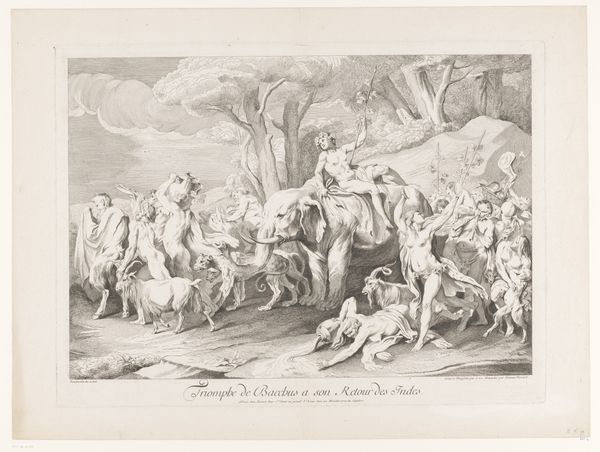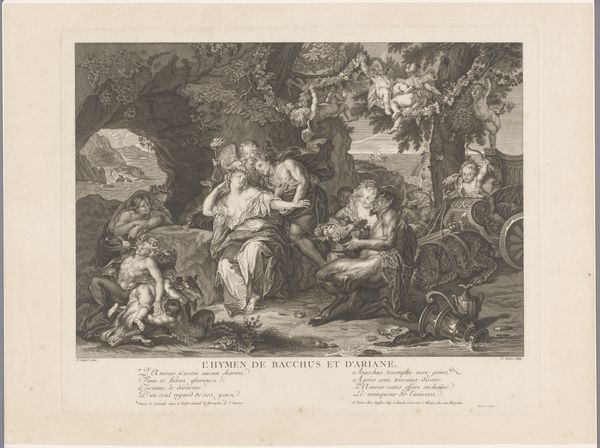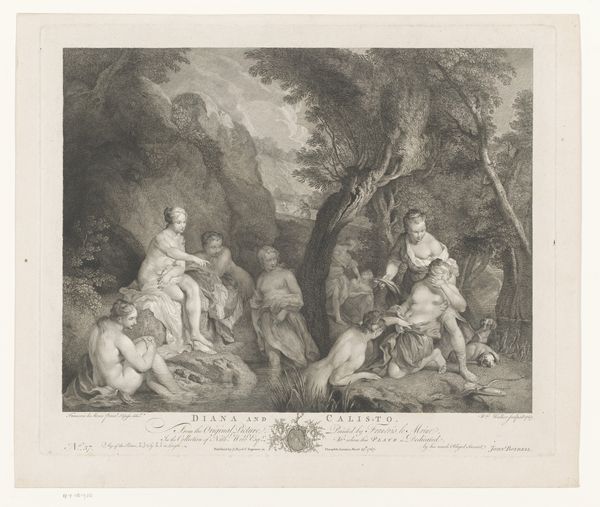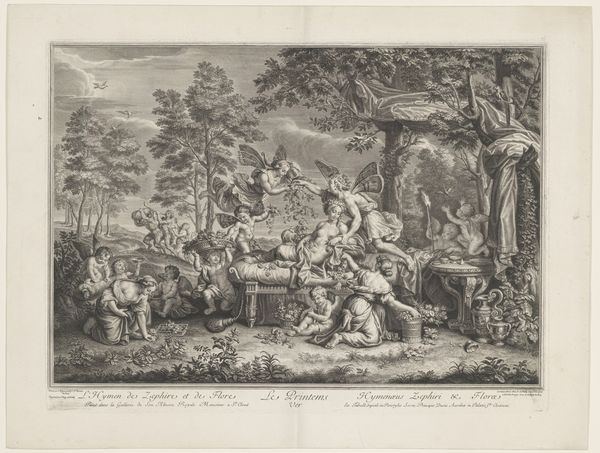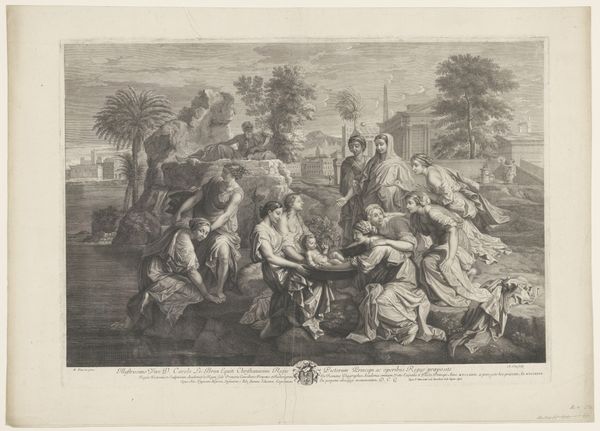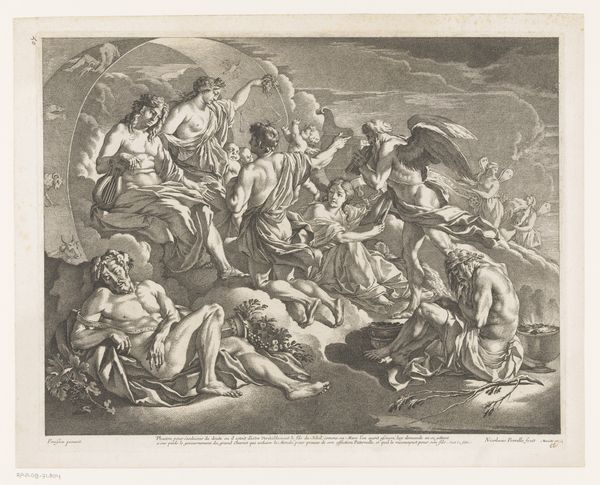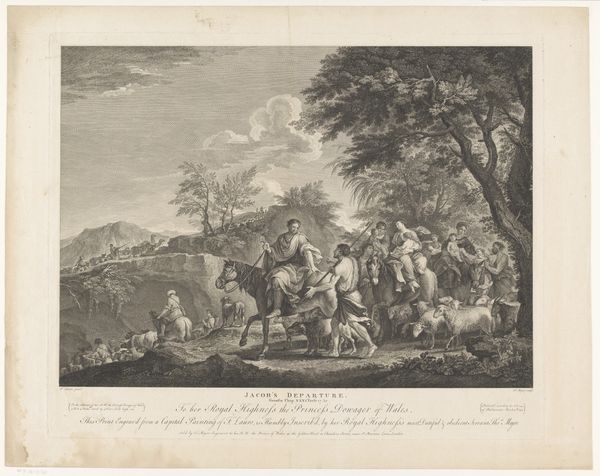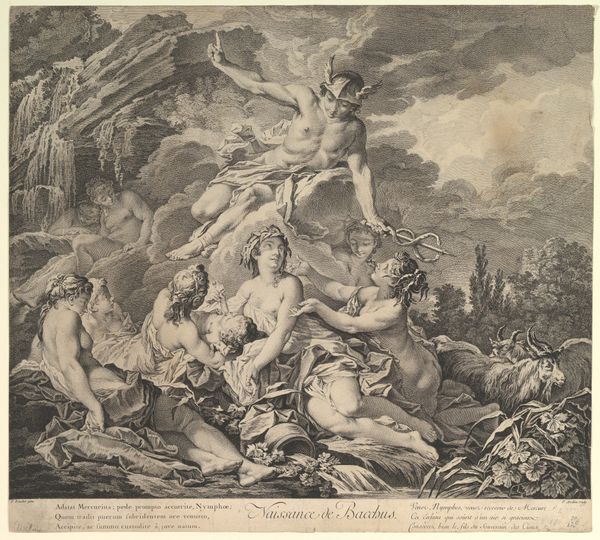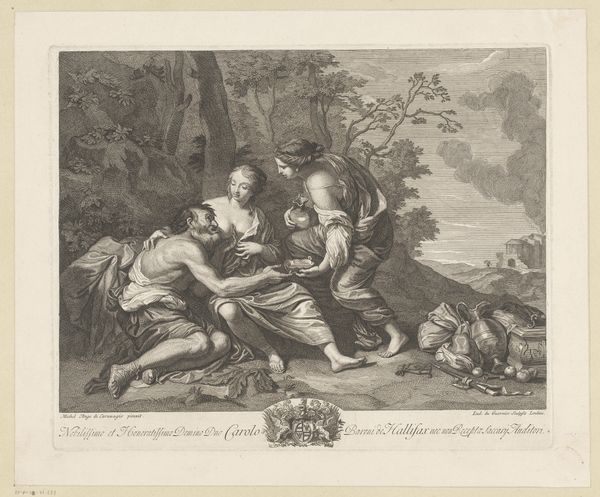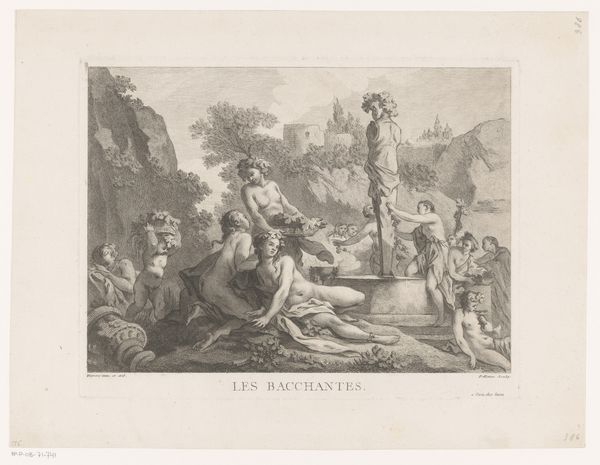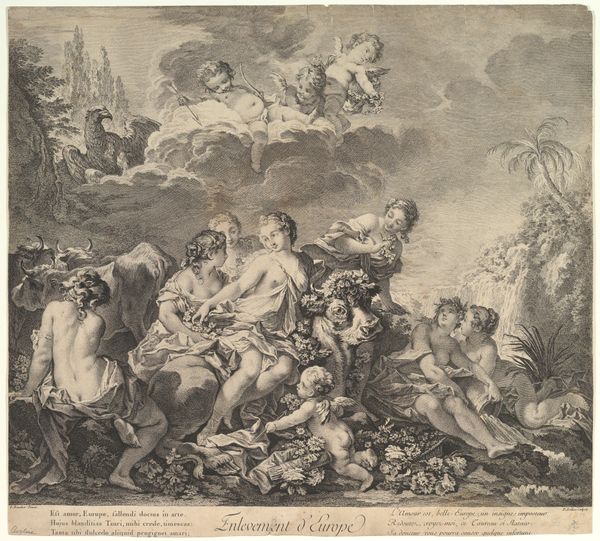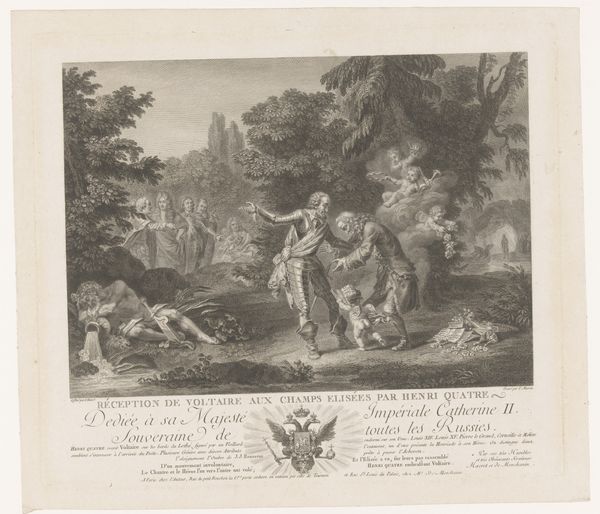
#
pencil drawn
#
photo of handprinted image
#
light pencil work
#
ink paper printed
#
pencil sketch
#
incomplete sketchy
#
pencil drawing
#
pen-ink sketch
#
watercolour illustration
#
watercolor
Dimensions: height 488 mm, width 627 mm
Copyright: Rijks Museum: Open Domain
Curator: What an intricate scene! We’re looking at "Diana verandert Actaeon in een hert" – or “Diana changing Actaeon into a deer” – an artwork created by Jean Charles Le Vasseur, dating somewhere between 1749 and 1816. Editor: It has this ethereal quality; very delicate. Almost feels like peering into a dream, given the soft pencil work. Is it just pencil? Curator: More than that – it’s actually an ink and watercolour print on paper. Look closely, and you can see the subtle layering of tones. Le Vasseur was clearly a master of the printmaking process, understanding how the pressure and the ink itself could evoke such a soft texture. The question is, for whom was this piece made and how was it distributed? Was it aimed at the elite? Or could such prints be more accessible than painted works, allowing a broader public to consume mythological scenes like this? Editor: Considering the subject matter and the style, it would likely have circulated within specific social and intellectual circles. These mythological scenes carried certain weight and would've served certain purposes. How much were these hand-printed images tied into Enlightenment thought on antiquity, or even evolving class structures, with the potential of mass production and distribution changing the market? The material informs how we situate it. Curator: Precisely. And we must consider the setting of the Rijksmuseum itself – how does placing this work here, in this institution, affect its meaning? Does it solidify its status as “high art,” or does its reproductive nature challenge those very notions? The museum gives it visibility but also frames how it's interpreted. Editor: Museums like this inherently reinforce existing power dynamics within art history. I'd be interested in the actual costs and methods associated with crafting such images, too. Curator: Definitely. This image provides ample food for thought about technique, history, and the institution. It asks so much about the art world of its era. Editor: Exactly! This conversation helped bring into focus how the artist played a key part in reproducing an artistic piece in early modern society. It has changed how I perceive the work in context.
Comments
No comments
Be the first to comment and join the conversation on the ultimate creative platform.
